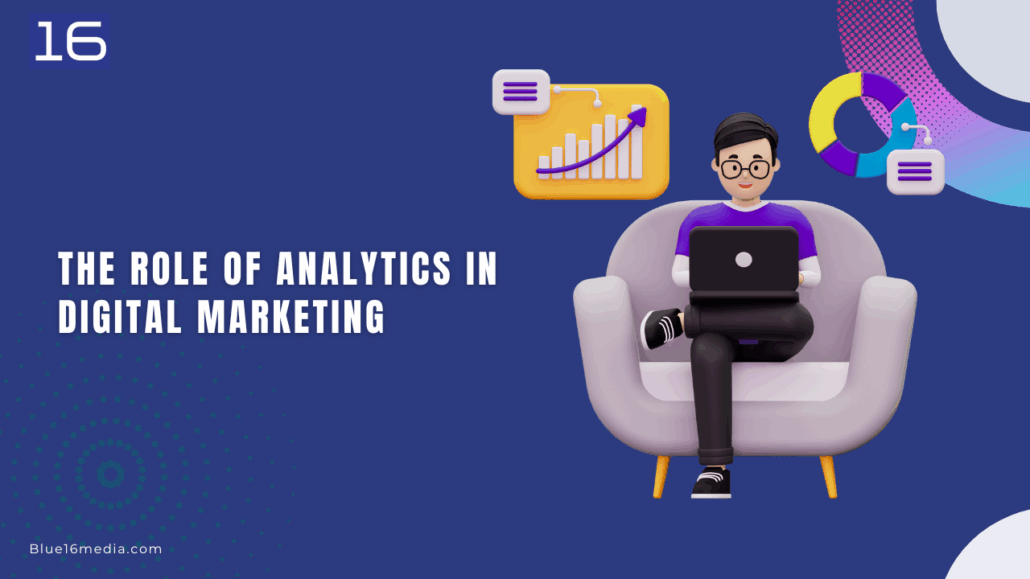Digital marketing analytics is all about making sense of the vast amount of marketing data generated every day. Instead of relying on gut feelings, digital marketers use data to see what’s really working, what’s not, and how to improve their marketing strategies.
It helps you understand who your customers are, how they interact with your brand, and what motivates their purchasing decisions.
This guide walks you through how to leverage analytics to make smarter decisions, optimize your marketing efforts to achieve a higher return on investment.
How Analytics Drives Marketing Strategies
Analytics helps pinpoint market trends and customer behaviors. By analyzing data, you can identify patterns and preferences that inform your marketing strategies.
Analytics helps gauge the effectiveness and reach of your marketing campaigns, enabling you to refine your approach and focus on what delivers the best results.
For example, if you see a spike in traffic from a particular social media platform, analytics can help you allocate more resources to that channel to maximize your reach and impact.
Key Components of Marketing Analytics
Types of Marketing Data to Consider
When diving into marketing analytics, it’s crucial to identify the types of marketing data that matter most. This includes customer data like demographics, purchase history, and engagement metrics.
Digital marketing activities generate valuable data from various touchpoints, such as;
- Website visits
- Social media interactions
- Email click-through rates.
Understanding this data is foundational for analyzing data and optimizing your marketing efforts, leading to a higher return on investment.
Analytics Tools for Small Businesses
To effectively leverage analytics in digital marketing, small businesses need the right analytics tool.
Several options exist to help them in this task, including:
- Google Analytics, a free and powerful option for website analytics, tracking traffic, user behavior, and conversion rates.
- Social media platforms, which offer their own analytics dashboards, provide insights into audience engagement and campaign performance.
Choosing the right digital analytics tools allows digital marketers to make data-driven decisions and refine their digital marketing strategies.
Gathering Customer Data Effectively
Effective data analytics in marketing starts with gathering customer data ethically and efficiently.
- Implement forms, surveys, and tracking pixels on your website to capture relevant information.
- Encourage social media engagement and monitor interactions to understand customer behavior.
- Ensure compliance with privacy regulations while collecting and analyzing data.
Using Data to Improve Marketing Strategies
Making Data-Driven Decisions
Analytics enable highly targeted and personalized marketing initiatives. By evaluating campaign data, marketers can discern what resonates best with their audience, fine-tuning campaigns for maximal engagement and conversion rates.
Insights on user interaction with your site guide improvements in design and content, bolstering both user experience and site performance.
Real-Time Analytics for Immediate Impact
Real-time analytics provides digital marketers with immediate insights into ongoing marketing campaigns. This allows for quick adjustments to optimize performance and capitalize on emerging market trends.
It identifies what’s working and what’s not, making immediate changes to improve conversion rates. For example, if you notice a sudden drop in traffic from a specific source, real-time analytics can help you quickly identify and address the issue.
Predictive Analytics: Anticipating Customer Needs
Innovations in artificial intelligence (AI) and machine learning promise to unlock deeper, predictive analytics insights into customer preferences and future trends. This enables marketers to anticipate needs and tailor marketing strategies accordingly.
Predictive analytics can forecast future market trends and customer behavior. This allows your marketing team to proactively adjust marketing strategies, enhancing the return on investment of your digital marketing campaign.
Measuring ROI with Digital Marketing Analytics
Return on Investment (ROI) in digital marketing quantifies the profitability of your marketing efforts. It measures the revenue generated for every dollar spent on a digital marketing campaign, helping you assess the effectiveness of your marketing strategies.
Calculating ROI accurately requires tracking all costs associated with your digital marketing initiatives, including advertising spend, software subscriptions, and employee salaries.
Calculating ROI Using Marketing Analytics
To calculate ROI using marketing analytics, start by identifying the total revenue generated from a specific digital marketing campaign.
Subtract the total cost of the campaign from this revenue to determine the net profit. Divide the net profit by the total cost, and then multiply by 100 to express the ROI as a percentage.
For instance, if a marketing campaign cost $10,000 and generated $30,000 in revenue, the ROI would be 200%.
Best Practices for Ongoing Data Analysis
For ongoing data analysis, focus on metrics closely aligned with business goals to avoid data overload. Merging insights from various areas is crucial for a comprehensive marketing overview.
It’s important to keep up with changes by focusing on:
- Analytics trends.
- Regularly reviewing and refining your marketing strategies based on data-driven insights.
Digital marketing is always evolving; implement changes based on insights and gauge their impact to continually refine marketing strategies and maximize return on investment.


